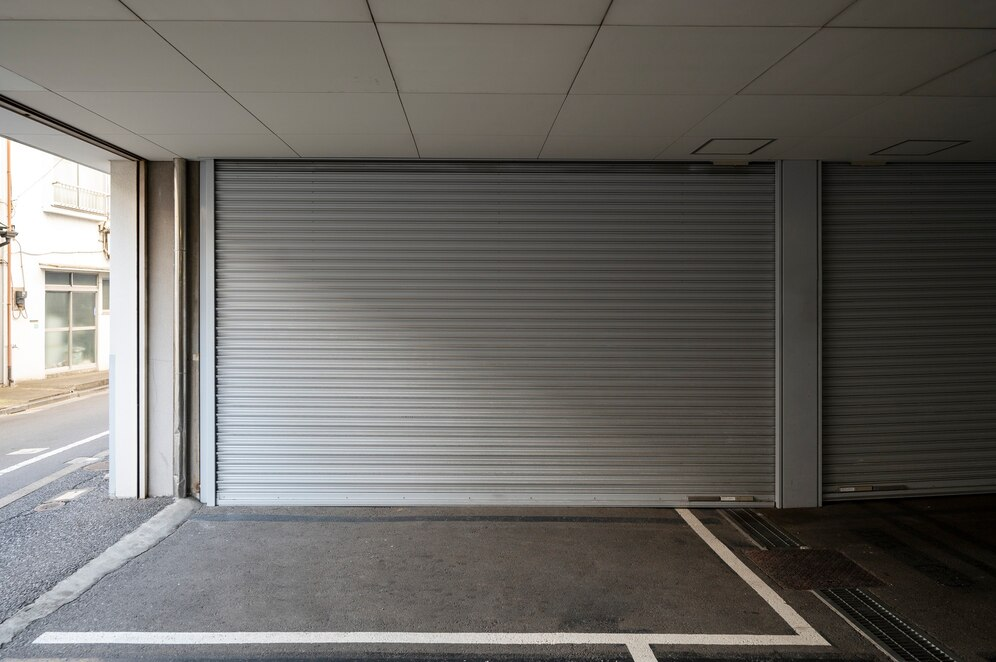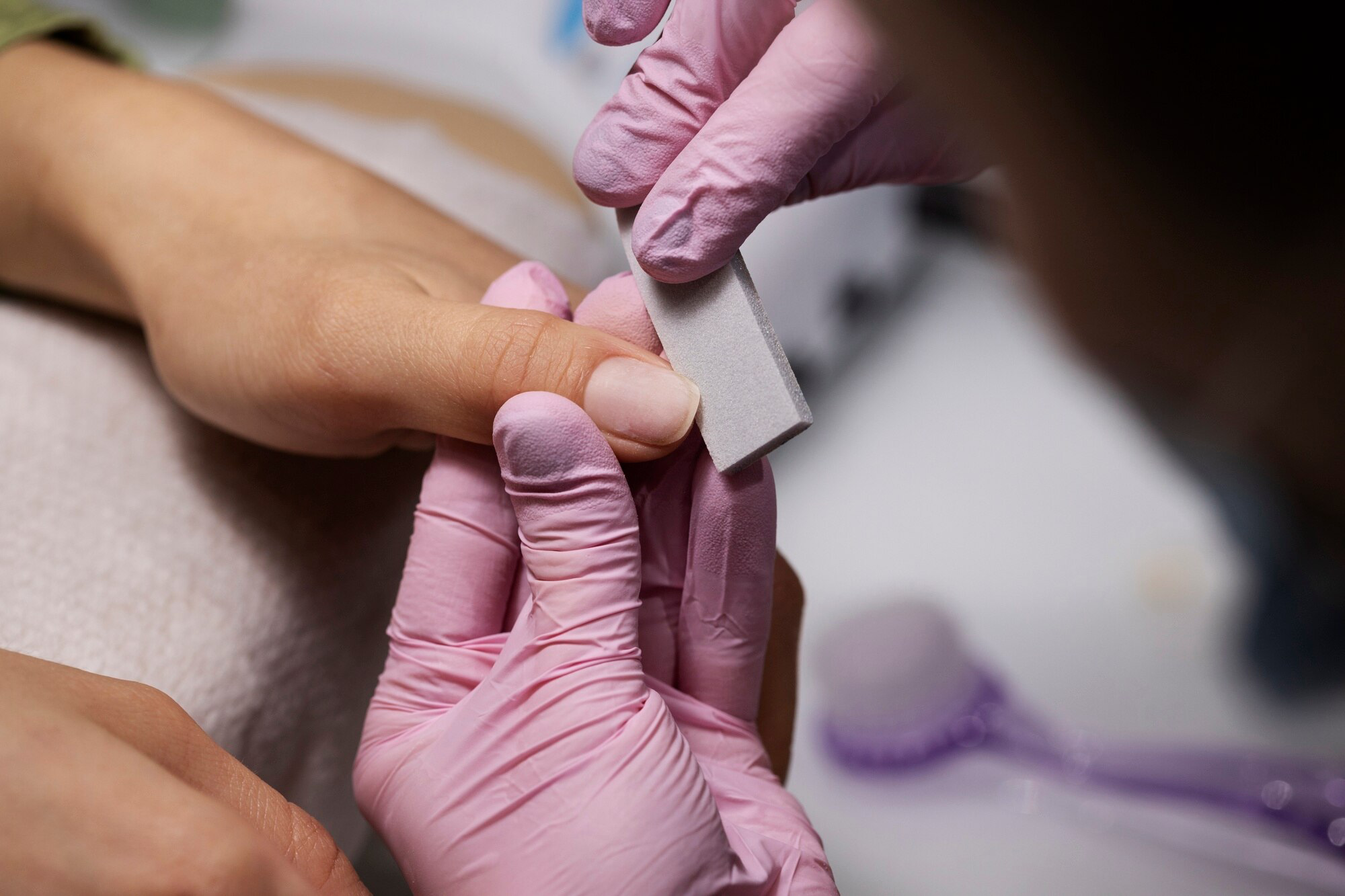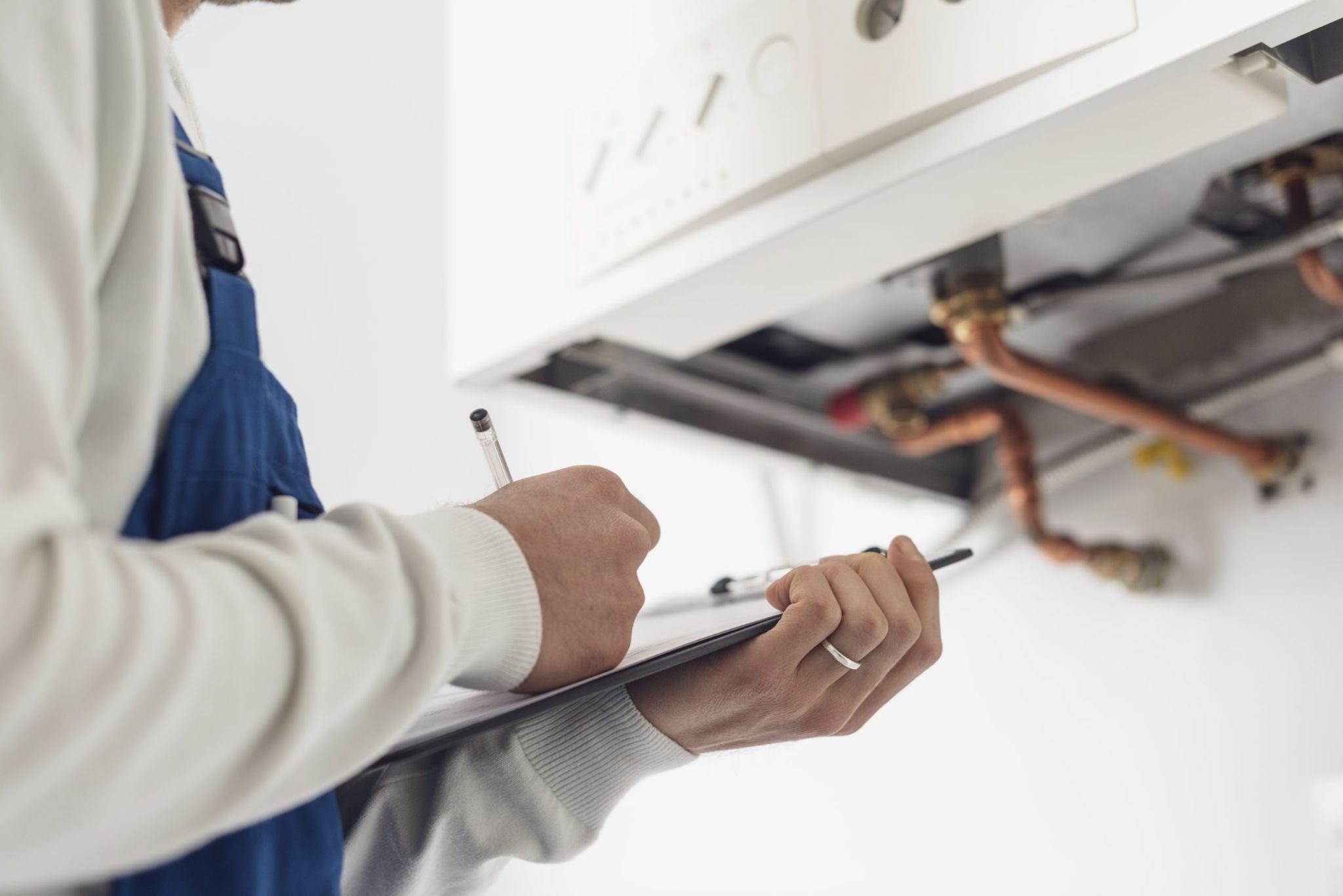Learning
DIY Repair for Off-Track Garage Doors: Causes and Solutions

The security of your home and possessions is significantly reliant on the proper functioning of your garage door. However, when it goes off-track, it can pose safety risks and inconvenience. Professional garage door repair services are available, but if you’re inclined towards a DIY approach, this guide will walk you through the common causes and solutions for off-track garage doors. For complex issues or if you are unsure, always consult a professional. If you’re looking for reliable garage door repair services, consider garage door repair Toronto.
Causes of Off-Track Garage Doors
-
Broken Rollers:
- Identify and inspect rollers for visible signs of damage or wear.
- Replace any broken or worn-out rollers with compatible replacements.
- Lubricate rollers with a silicone-based lubricant to ensure smooth movement.
-
Misaligned Tracks:
- Check for any gaps or misalignment in the tracks.
- Utilize a level to verify that the tracks are straight and in correct alignment.
- Tighten or adjust track brackets and fasteners as needed.
-
Loose or Bent Tracks:
- Examine the tracks for any bends or warps.
- Tighten loose track brackets and straighten bent sections with a rubber mallet.
- Contemplate replacing the tracks if they are extensively damaged.
-
Cable Issues:
- Inspect cables for fraying or damage.
- Replace damaged cables with new ones, ensuring they are properly tensioned.
- Seek professional help if you are unsure about cable replacement.
-
Damaged Rollers or Hinges:
- Examine hinges for cracks or bends and replace if necessary.
- Ensure that all rollers are intact and move freely within the tracks.
Safety Precautions
Importance of Turning Off the Garage Door Opener
-
Disconnect Power Source:
- Prior to undertaking any DIY repair for an off-track garage door, it is crucial to disconnect the power source to the garage door opener.
- Identify the power cord or employ the disconnect switch to ensure the system is fully powered down.
-
Prevent Accidental Activation:
- Turning off the garage door opener prevents accidental activation during repair.
- This ensures the door remains stationary, minimizing the risk of injury or further damage.
-
Safety Lock Activation:
- Engage the safety lock feature on the garage door opener, if available.
- This additional step enhances security by preventing the garage door opener from operating during the repair process.
Using Props to Secure the Door in the Down Position
-
Safety Stands or Blocks:
- When the garage door is off-track, use sturdy safety stands or blocks to support the door in the fully closed position.
- Place the props on either side of the door, ensuring they can bear the weight and provide stability.
-
Prevent Unintended Movement:
- Prop the door securely to prevent unintended movement during the repair process.
- This ensures a stable working environment, reducing the risk of the door falling or shifting unexpectedly.
-
Height Adjustment:
- Adjust the height of the props to match the door’s position, providing optimal support.
- Strategically position the props to ensure an even distribution of weight, preventing any tilting or imbalance.
-
Verify Stability:
- Before starting the repair, verify the stability of the props and the door’s position.
- A secure and immobile door minimizes the risk of accidents and ensures a safer working environment.
-
Cautionary Measures:
- Advise anyone in the vicinity to be cautious and stay clear of the supported garage door.
- Emphasize the importance of not tampering with the props or attempting to operate the door while repairs are underway.
Adhering to these safety precautions can substantially minimize the risks associated with DIY garage door repairs. Prioritize safety at all times, and if there is any uncertainty regarding any aspect of the repair process, it is advisable to seek professional assistance. Remember, a secure and stable working environment is essential for successful and safe garage door maintenance.
DIY Solutions
-
Adjusting Tracks:
- Employ a wrench to tighten any bolts or nuts on the tracks that may be loose.
- Loosen track bolts slightly, adjust the tracks, and tighten them again.
- Ensure an equal gap on both sides of the door by adjusting the tracks accordingly.
-
Lubrication:
- Apply a generous amount of silicone-based lubricant to rollers, tracks, and hinges.
- Lubricate the entire length of the tracks to reduce friction and aid smooth movement.
-
Check for Obstructions:
- Inspect the tracks for any debris or objects that might be causing obstruction.
- Clear any foreign materials that could hinder the door’s movement.
-
Professional Consultation:
- If the issue persists or seems complex, consult a professional garage door repair service.
- Experts possess the necessary expertise and tools to diagnose and address more intricate problems effectively.
Testing the Garage Door Movement
| Step | Action | Description |
|---|---|---|
| 1 | Reconnection of Power | After completing repairs, reconnect the power source to the garage door opener. Ensure a secure connection. |
| 2 | Remove Safety Props | Carefully remove safety stands or props used during repair. Confirm the area is clear of any obstructions. |
| 3 | Manual Operation Test | Engage manual operation mode and check for smooth door movement along the tracks. |
| 4 | Automatic Operation Test | Test automatic operation using the opener’s remote or wall button. Observe smooth movement from inside and outside. |
| 5 | Listen for Unusual Noises | Pay attention to unusual sounds (grinding, scraping) during door movement. Investigate if noises persist. |
| 6 | Balance Check | Disconnect the opener, raise the door halfway manually, and ensure it stays in place when released. |
| 7 | Re-Adjustment if Necessary | Revisit repair areas if issues with movement or balance are identified. Readjust components as needed. |
| 8 | Safety Sensor Test | Conduct a safety sensor test by introducing an object into the door’s path during the closing process. Verify that the door promptly reverses upon detection. |
| 9 | Final Inspection | Conduct a visual inspection of the entire system. Look for misalignment, loose components, or abnormalities. |
| 10 | Operational Feedback | Gather feedback from users. Address concerns raised during testing to ensure overall satisfaction and safety. |
By following this systematic testing process and referring to the table, you can effectively assess the functionality and safety of your garage door after DIY repairs. If issues persist or uncertainties arise, consult professional garage door services for further assistance. Consistent testing and maintenance efforts play a crucial role in enhancing the longevity and reliability of your garage door system.
Preventive Maintenance
-
Regular Inspections:
- Conduct routine inspections of your garage door system to identify potential issues early on.
- Look for signs of wear and tear, and address them promptly.
-
Scheduled Lubrication:
- Establish a regular lubrication schedule for all moving parts of your garage door.
- Routine lubrication serves to minimize friction, consequently extending the lifespan of your door components.
-
Balance Checks:
- Regularly assess the balance of your garage door by disconnecting the opener and manually operating it from time to time.
- An imbalanced door puts additional strain on the system and can lead to off-track issues.
In conclusion, addressing off-track garage doors requires a systematic approach. By comprehending the common causes and applying the recommended DIY solutions, you can uphold the functionality and safety of your garage door. For thorough and professional garage door repair services, contemplate contacting a reputable service in your area. Always prioritize safety, and if uncertainty arises, seek professional assistance.
SEE ALSO: The Green Horizon: Navigating the Future of Cannabis Dispensaries in Canada

Learning
First-Time Buyer’s Guide to the UK Property Market

Entering the UK property market as a first-time buyer can feel both exciting and daunting. The process is filled with potential pitfalls and complex decisions, but with the right guidance, it can be navigated smoothly. The estate agents in Yorkshire demystify the journey from the initial decision to buy a home to the moment you step over the threshold of your new property.
Understanding Your Financial Position
The first and perhaps most crucial step in the home-buying process is understanding your financial situation. This includes assessing your savings, income, and current debts. Here’s how you can prepare:
1. Deposit: Generally, you’ll need at least 5% of the property price as a deposit, though aiming for 10% or more can provide better mortgage rates.
2. Income and Expenses: Use a budget planner to assess your monthly income against your expenses. This will help you understand how much you can afford in monthly mortgage repayments.
3. Credit Score: Lenders will evaluate your credit score to determine your mortgage eligibility. So it’s important to have a good credit score, and you should work on it if required.
4. Mortgage Options: Speak to a mortgage advisor to understand different types of mortgages, such as fixed-rate, variable-rate, and help-to-buy schemes.
Getting a Mortgage Agreement in Principle
A Mortgage Agreement in Principle (AIP) is a statement from a lender indicating how much they’ll likely lend you. You will be a more attractive buyer with an AIP as it shows sellers you’re serious and financially prepared.
Deciding What You Want
Before you start viewing properties, it’s essential to know what you’re looking for. Consider the following factors:
1. Location: Proximity to work, schools, public transport, and amenities are key. Research neighbourhoods to find the best fit for your lifestyle.
2. Property Type: Decide whether you want a flat, terraced house, semi-detached, or detached property. Each has its pros and cons.
3. Must-Haves: Make a list of non-negotiables, such as the number of bedrooms, garden size, and parking facilities.
4. Future Proofing: Consider your future needs. Are you planning to start a family? Do you need space for a home office?
Starting the Property Search
With a clear idea of what you’re looking for, you can begin your property search. Here are some tips:
1. Use Online Portals: Websites like Rightmove, Zoopla, and OnTheMarket are excellent starting points. Set up alerts to get notified of new listings that meet your criteria.
2. Visit Estate Agents: Register with local estate agents who can provide insights into the market and inform you of new properties before they’re listed online.
3. Attend Viewings: Don’t rush this part. Visit several properties to get a feel for what’s available in your price range.
Making an Offer
Once you find a property you love, it’s time to make an offer. Here’s how to approach it:
1. Research: Check the selling prices of similar properties in the area to gauge a fair offer.
2. Negotiate: Don’t be afraid to negotiate. The starting point is most usually the asking price.
3. Conditions: You might include conditions in your offer, such as the inclusion of certain fixtures or a specific moving date.
The Legal Process
If your offer is accepted, the legal process begins. You’ll need a solicitor or licensed conveyancer to handle the legalities. Here’s what to expect:
1. Conveyancing: This is the legal transfer of property ownership. Your solicitor will handle this, including conducting searches, dealing with the Land Registry, and transferring the funds.
2. Surveys and Inspections: Arrange for a property survey to check for structural issues. There are different types of surveys, from basic condition reports to full structural surveys.
3. Mortgage Finalisation: Once the survey is complete and satisfactory, your mortgage can be finalised.
4. Exchange of Contracts: This is when the sale becomes legally binding. You’ll pay your deposit at this stage.
5. Completion: On the agreed completion date, the remaining money is transferred, and you receive the keys to your new home.
Moving In
Moving day can be hectic, but planning can ease the stress:
1. Hire a Removal Company: Book a reliable removal company well in advance. Discover the best deals by getting quotes from multiple companies.
2. Pack Strategically: Label your boxes by room and keep essential items accessible.
3. Notify Utilities and Change Address: Inform your utility providers of your move date and update your address with banks, the DVLA, and other important institutions.
Settling In
Get settled. Introduce yourself to the neighbours, familiarise yourself with the local area, and really start to make the place your own.
Here are a few final tips:
1. Safety Checks: Make sure that your smoke alarms and carbon monoxide detectors are working, and make sure that you know where the gas and electricity meters are located.
2. Maintenance Plan: Keep a record of the smooth functioning of your new home with a maintenance schedule, complete with regular checks and seasonal tasks.
3. Personal Touches: Add personal touches to make the space feel like home. This can be from putting up family photos or redoing the decoration in your rooms.
Conclusion
Buying your very first home in the UK is most definitely a milestone, difficult and full of challenges but rewarding in the end. Such a philosophy guides you in understanding finances and knowing what you want to achieve from detailed research, and seeking professional advice that confidently helps you navigate the property market. Yes, the journey may have its hurdles, but in the end—owning your own home—the reward will be worth the effort. Welcome to your new chapter!
SEE ALSO: Conquer the Chaos: Hacks to Clean Your Home in Half the Time
Learning
5 Health Benefits of Regular Pedicures

There’s nothing quite like a pedicure to keep your feet looking and feeling their best, but did you know that pedicures do more than simply enhance the appearance of your feet? Many people don’t realize that regular pedicures can come with a wide range of health benefits that can promote the well-being of your feet, so here are some ways that your routine pedicure keeps both your toenails and feet in the best condition possible!
Smoother Skin
One of the biggest misconceptions about pedicures is that they only cater to and look after your toenails. While you’ll definitely be leaving each session with a fresh coat of nail polish, your pedicure can also do wonders for the health of your skin. Aside from trimming and shaping your nails and cuticles, you’ll notice that your nail technician also dedicates a few steps to the skin of your feet.
After inspecting your feet and looking for any issues or imperfections that may need to be addressed, your technician will work on an exfoliating scrub to remove any dead skin cells. This step may also be aided by a foot file, which can be used to buff away any calluses and other problem areas manually.
Softer Skin
After your nail technician addresses all the problem areas of your feet and removes any unwanted dead skin cells, he or she will often massage in a moisturizing product, such as lotion, cream, or butter, to ensure that your skin is properly moisturized. These products contain skin-loving ingredients that will ensure that your feet have everything they need to look and feel their best so that you can walk out of your pedicure with a renewed sense of confidence.
Healthier Nails
After your pedicure session, your nails will not only look better due to the fresh coat of nail polish, but they’ll also be healthier and stronger. This is because your nail technician takes their time to ensure that your nails are properly looked after through steps that include deep cleaning, nail trimming, nail filing, and cuticle care. All of these things work together to prevent issues like ingrown nails from occurring, all the while improving the appearance of your nails.
Increased Blood Circulation
While the specific steps included in your pedicure will depend on the beauty salon, most pedicures will have a massage step somewhere in the mix. One of the often overlooked benefits of these massages is the increased blood circulation, which can deliver more nutrients and oxygen to your feet and nails, promoting their health and appearance. Aside from that, better blood flow means reduced tension and soreness, as well as better distributed heat throughout your body.
Reduced Infections
A significant amount of dirt and bacteria can build up on your feet without you even realizing it, but pedicures can be a great way to prevent these from happening in the first place. The exfoliation step of a pedicure removes dead skin cells as well as all the debris that may have accumulated underneath, and the deep cleaning of your toenails and cuticles also gets rid of any impurities that may have slipped beneath them, which can stop infections from happening.
These are some of the many health benefits that you can look forward to at your next pedicure appointment. However, it’s worth noting that you need to book regular sessions to truly reap all the rewards. This can be difficult, especially when you don’t feel like driving to your nearest nail salon after a long day, but the good news is that you can enjoy the salon experience in the comfort of your own home with a home pedicure service.
Learning
Commercial Boiler Installation Services London

For businesses in the bustling city of London, having a reliable heating system is crucial. Whether you’re opening a new office, expanding your current premises, or simply upgrading an outdated system, commercial boiler installation services for businesses in London are essential to ensure your operations run smoothly and efficiently. Proper installation and maintenance of commercial boilers can make a significant difference in energy efficiency, cost savings, and the overall comfort of your workspace.
The Importance of Professional Installation
When it comes to installing a commercial boiler, professional expertise is paramount. Here’s why:
- Efficiency and Performance: Professional installation ensures that your boiler operates at peak efficiency, reducing energy consumption and lowering utility bills. A well-installed boiler can effectively meet the heating demands of your business without unnecessary energy waste.
- Safety: Commercial boilers are complex systems that require precise installation to operate safely. Professional installers adhere to stringent safety standards and regulations, minimizing the risk of accidents and ensuring the safety of your employees and premises.
- Compliance with Regulations: Commercial properties are subject to various building codes and regulations. Professional installers are well-versed in these requirements and ensure that your boiler system complies with all local laws and standards.
- Longevity and Reliability: Proper installation is critical to the longevity and reliability of your boiler. A professional installation can prevent common issues such as leaks, pressure problems, and system failures, ensuring that your boiler runs smoothly for years to come.
Key Considerations for Commercial Boiler Installation
When planning for a commercial boiler installation, several factors need to be considered:
- Type of Boiler: The type of boiler you choose will depend on your business’s specific needs. Options include gas boilers, oil boilers, and electric boilers, each with its own set of advantages. Consulting with a professional can help you determine the best choice for your business.
- Sizing and Capacity: The boiler’s size and capacity must match the heating demands of your commercial space. An undersized boiler will struggle to meet your needs, while an oversized one will lead to inefficiencies and higher costs.
- Location: The placement of your boiler affects its efficiency and accessibility for maintenance. Professional installers can help you choose the optimal location for your boiler.
- Integration with Existing Systems: If you’re upgrading or replacing an existing boiler, it’s essential to ensure compatibility with your current heating system. Professional installers can seamlessly integrate the new boiler with your existing setup.
Choosing the Right Installation Service

Selecting the right installation service provider is crucial to the success of your boiler installation project. Consider the following when making your choice:
- Experience and Expertise: Look for a provider with a proven track record in commercial boiler installations. Experienced installers can handle the complexities of commercial systems and provide high-quality workmanship.
- Reputation: Check reviews and testimonials from previous clients to gauge the provider’s reliability and customer satisfaction.
- Comprehensive Services: Choose a provider that offers a full range of services, including installation, maintenance, and repair. This ensures that all your boiler needs are met by a single, trusted source.
In London, ROWLEN is a reputable name known for delivering top-notch commercial boiler installation services. Their team of experts is dedicated to providing efficient, safe, and compliant installations tailored to the unique needs of businesses.
Conclusion
Investing in professional commercial boiler installation services for businesses in London is essential for ensuring efficiency, safety, and long-term reliability. By choosing an experienced and reputable service provider like ROWLEN, you can rest assured that your heating system will be installed correctly and maintained to the highest standards. Proper installation not only enhances the performance of your boiler but also contributes to the overall comfort and productivity of your business environment.
SEE ALSO:
-

 News4 years ago
News4 years agoLet’s Know About Ultra High Net Worth Individual
-
Entertainment2 years ago
Mabelle Prior: The Voice of Hope, Resilience, and Diversity Inspiring Generations
-
News11 years ago
Enviromental Groups Tell Mekong Leaders Lao Dam Evaluation Process Flawed
-

 Health4 years ago
Health4 years agoHow Much Ivermectin Should You Take?
-

 Tech3 years ago
Tech3 years agoTop Forex Brokers of 2023: Reviews and Analysis for Successful Trading
-

 Lifestyles3 years ago
Lifestyles3 years agoAries Soulmate Signs
-

 Entertainment3 years ago
Entertainment3 years agoWhat Should I Do If Disney Plus Keeps Logging Me Out of TV?
-

 Health3 years ago
Health3 years agoCan I Buy Ivermectin Without A Prescription in the USA?